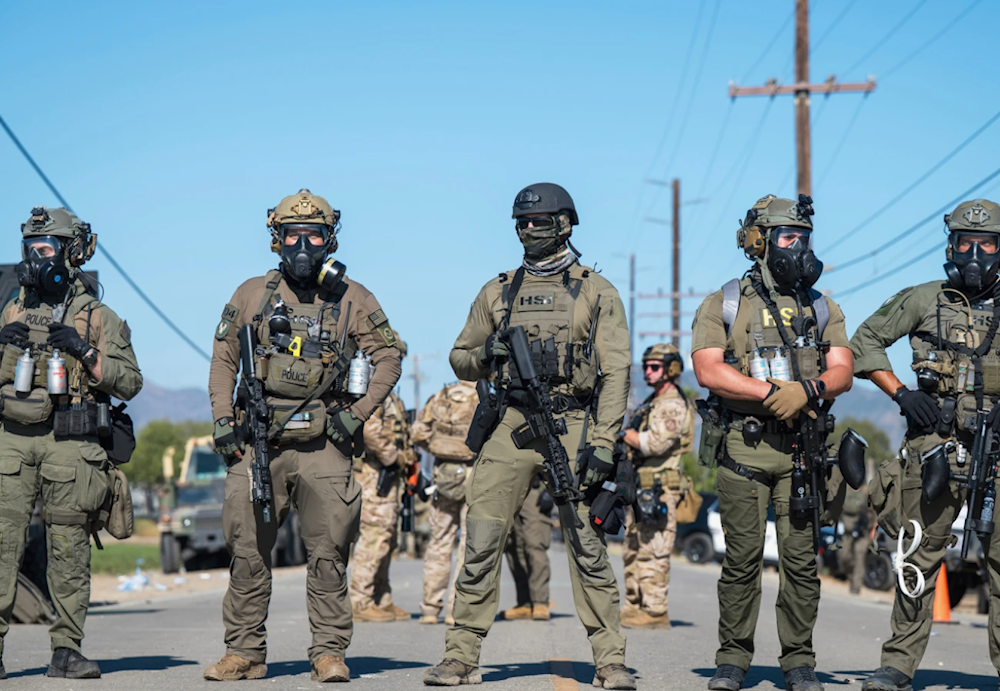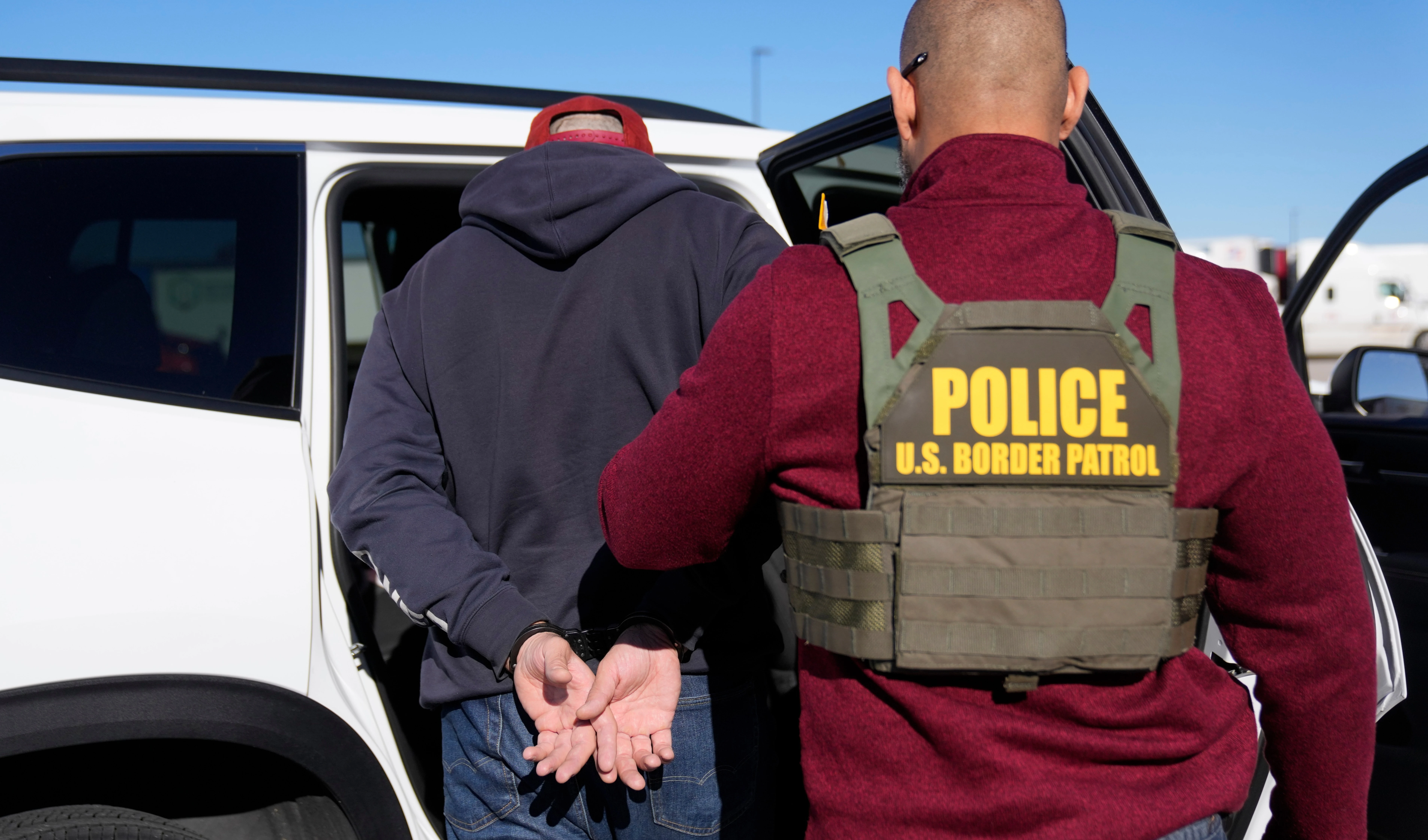US Border Patrol seeks AI to spy on urban cities, see through walls
The US Customs and Border Protection, with new multibillion-dollar funding, is seeking advanced AI technologies for urban surveillance.
-

Federal immigration agents block the road during a raid in the agricultural area of Camarillo, California, on July 10, 2025. (AP)
The US Customs and Border Protection (CBP), now bolstered by billions in new funding, is seeking advanced artificial intelligence technologies to monitor urban residential areas, increasingly autonomous systems, and even capabilities to see through walls.
A presentation by CBP at an "Industry Day" summit with private sector vendors, obtained by The Intercept, outlines in detail the technologies the agency hopes to acquire, such as satellite communications for surveillance towers along the border and enhanced wireless communications.
The presentation also shows that modern surveillance technologies powered by AI will play a central role in the Trump administration’s anti-immigration campaign, which is set to extend deep into the North American continent, hundreds of miles from the recognized international borders.
A sweeping piece of legislation recently signed by Trump allocates tens of billions of dollars to the Department of Homeland Security. While a large portion of this funding will go to Immigration and Customs Enforcement (ICE) to ramp up arrests and deportations, a significant share is designated for the purchase of new technologies and equipment for federal offices tasked with preventing migrant entry in the first place, namely, CBP, which manages the nation’s border surveillance, and its component, the US Border Patrol.
'Suspicious activity' definition left open
One page of the presentation, describing the wishlist of the agency’s Law Enforcement Operations Division, states that the agency needs advanced artificial intelligence to identify and track suspicious activity in urban environments [sic], referencing the "challenges" posed by densely populated residential areas. It does not define what qualifies as “suspicious activity".
The reference to AI-assisted urban surveillance appears on a page dedicated to the operational needs of the Border Patrol’s “Coastal Zone of Responsibility,” which spans the entire southeastern United States, from Kentucky to Florida. Another page, describing the “Southern Zone of Responsibility," covering all inland areas in Nevada and Oklahoma, states a need for “advanced intelligence to identify suspicious patterns” and “long-range surveillance", because “urban environments make it difficult to distinguish normal from suspicious activity.”
Although the Fourth Amendment of the US Constitution provides protections against arbitrary police searches, federal law grants immigration authorities the power to conduct stops and searches without a warrant within 100 miles of the US land borders with Canada or Mexico, or along the coastline. This area encompasses most of the country’s largest cities, including Los Angeles and New York, as well as the entire state of Florida.

 3 Min Read
3 Min Read










